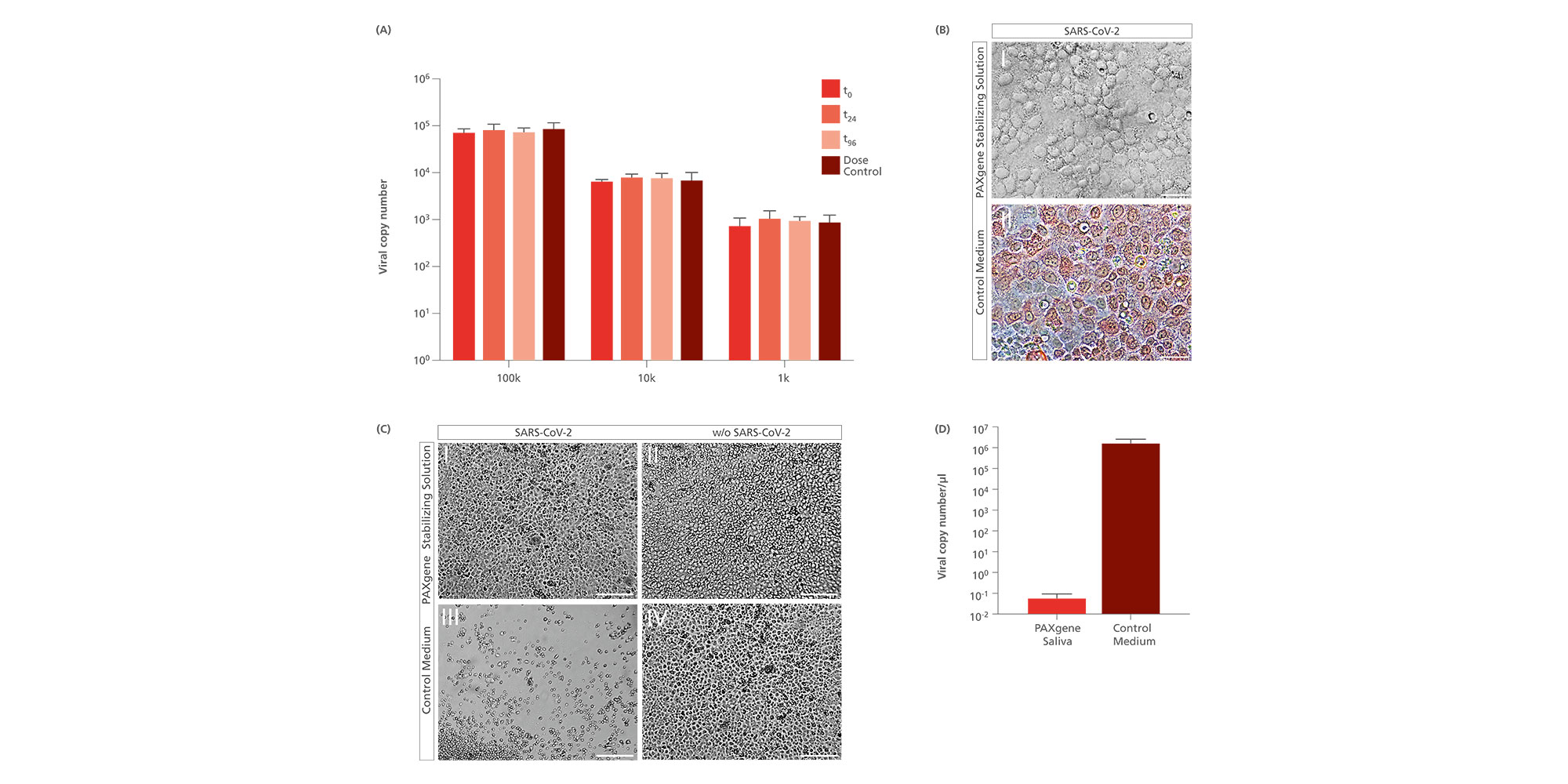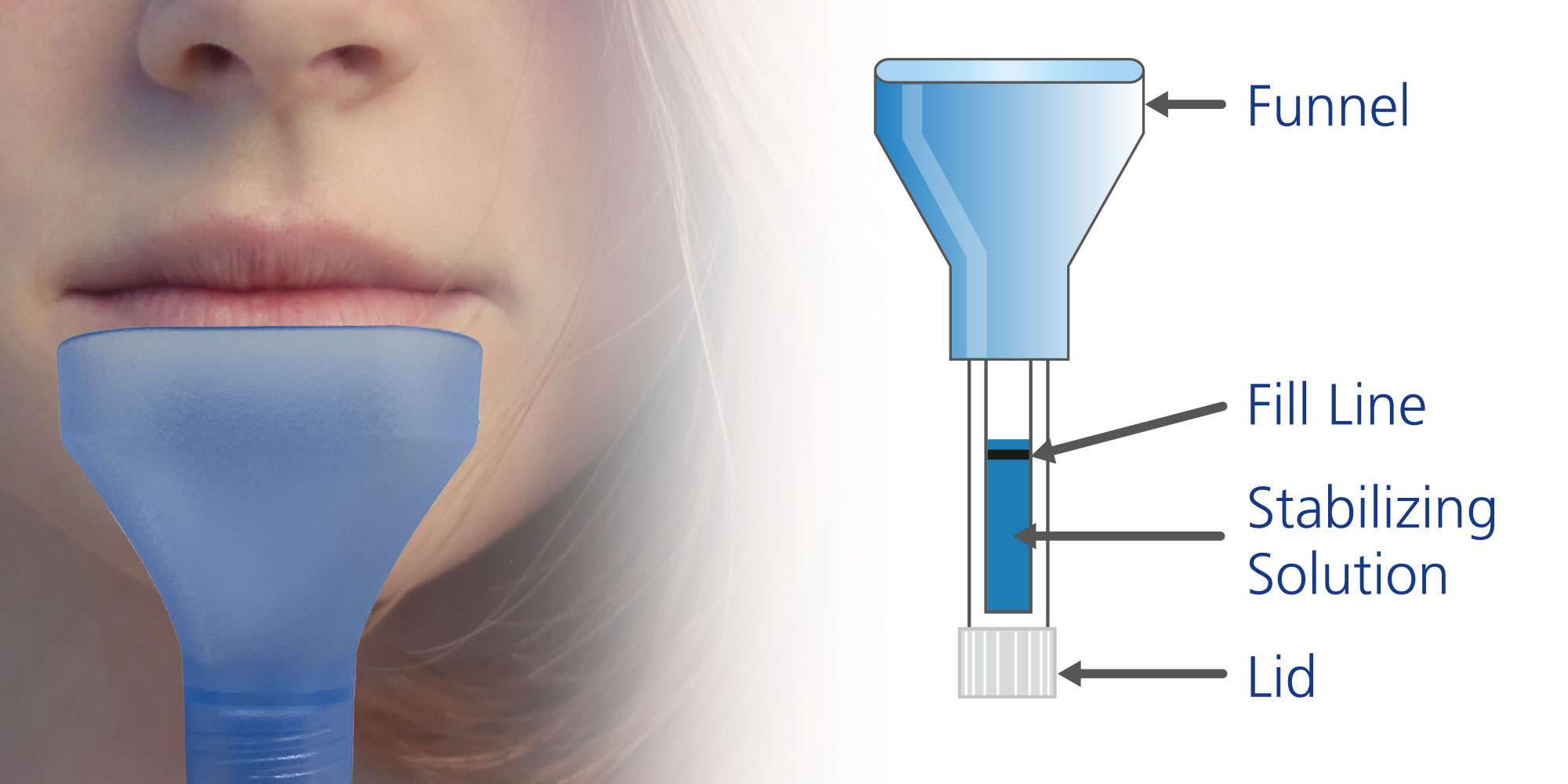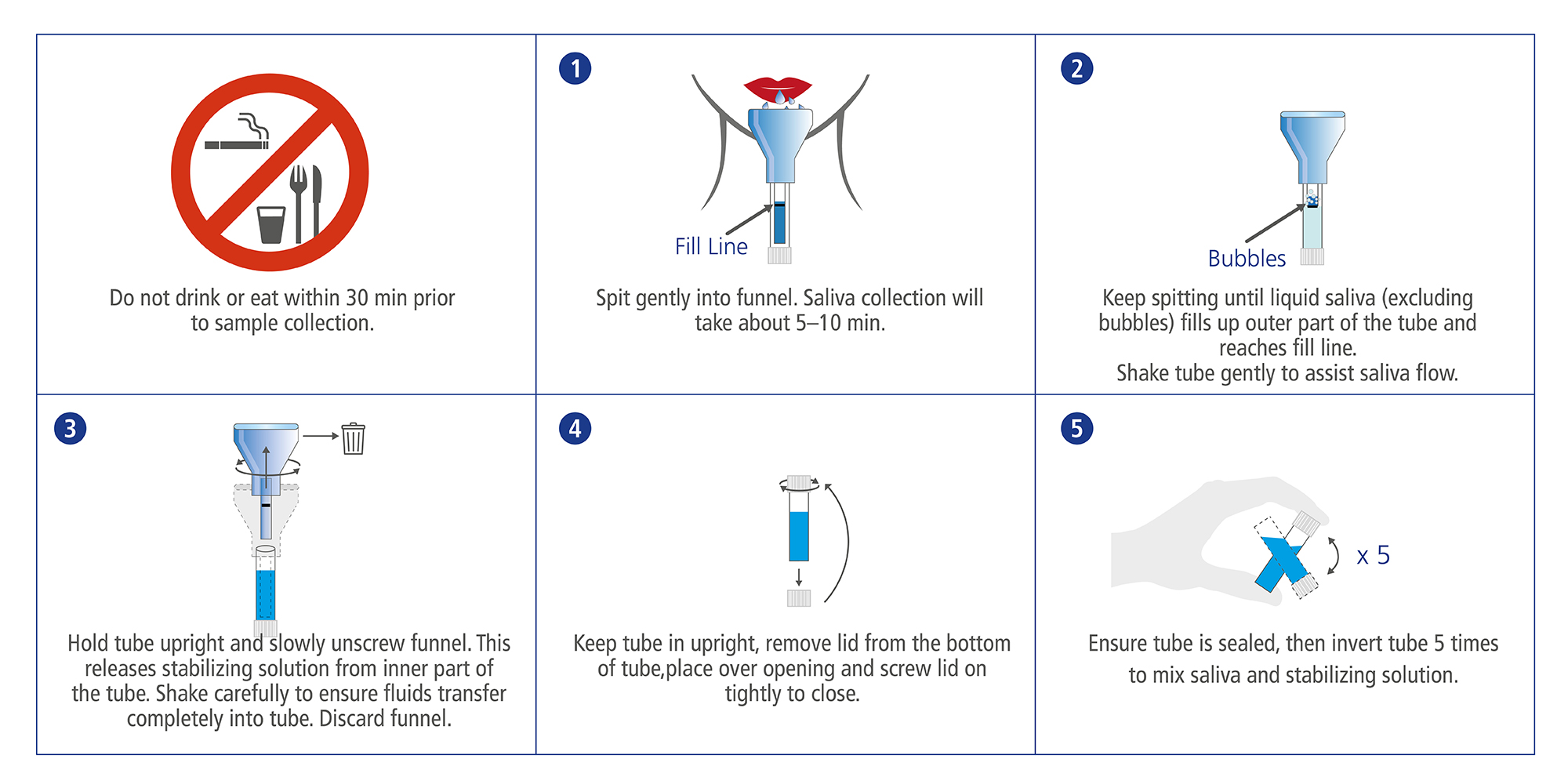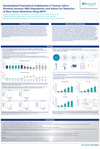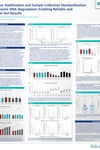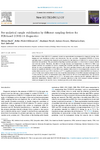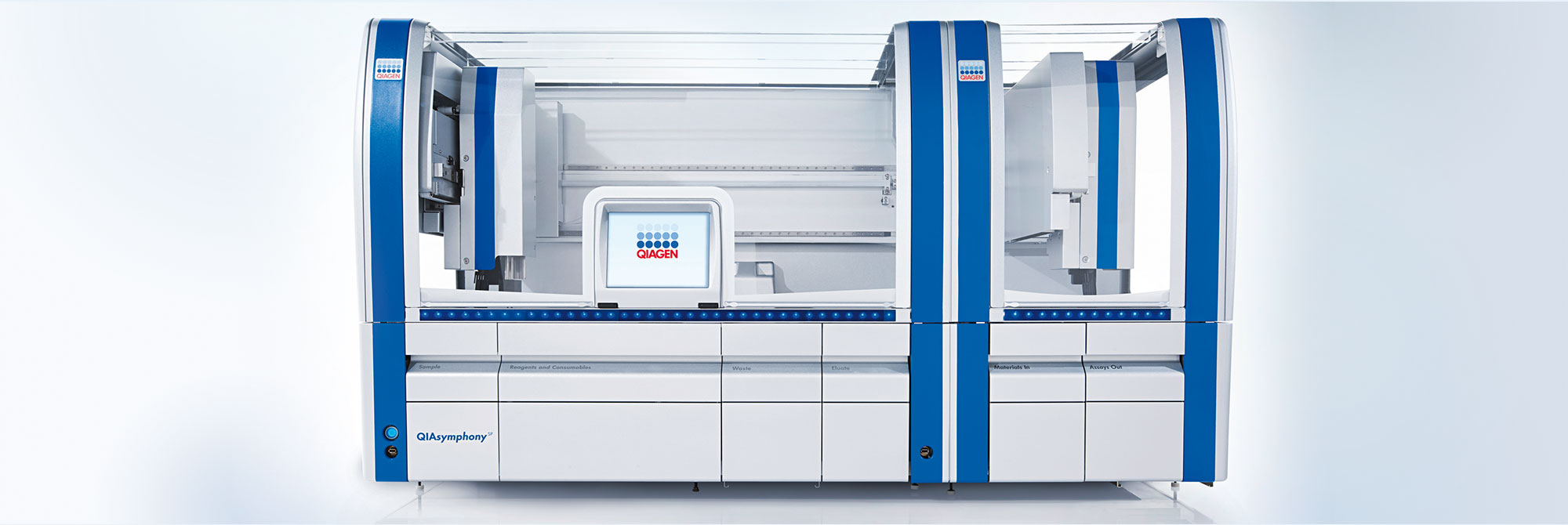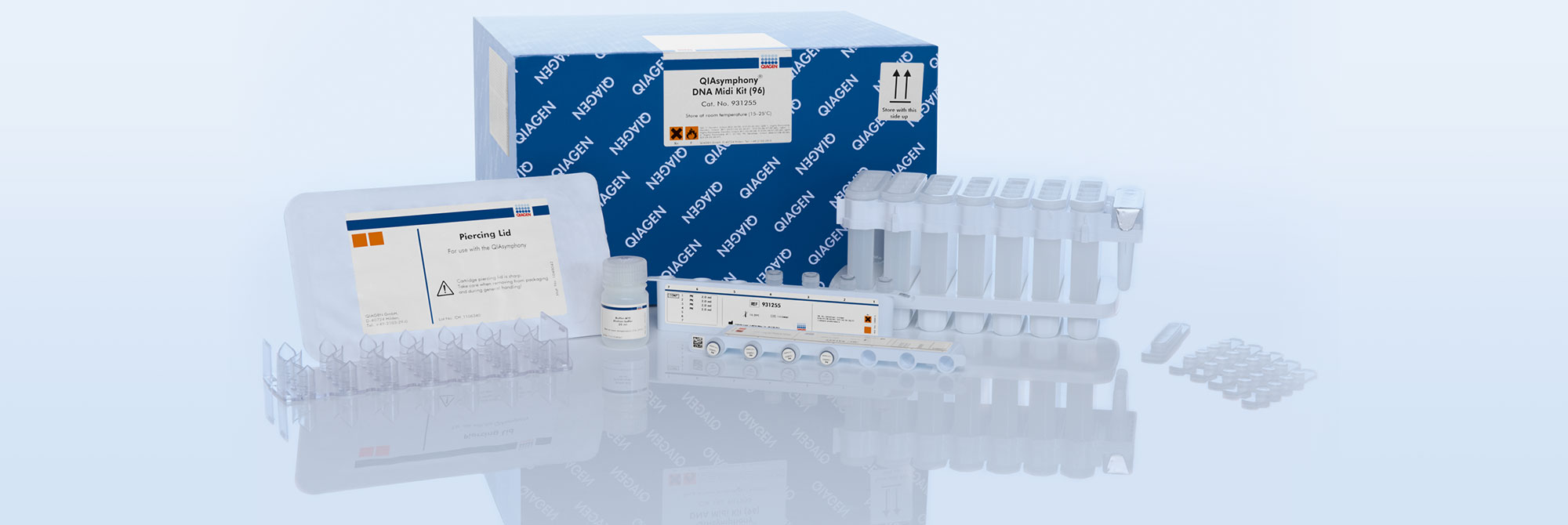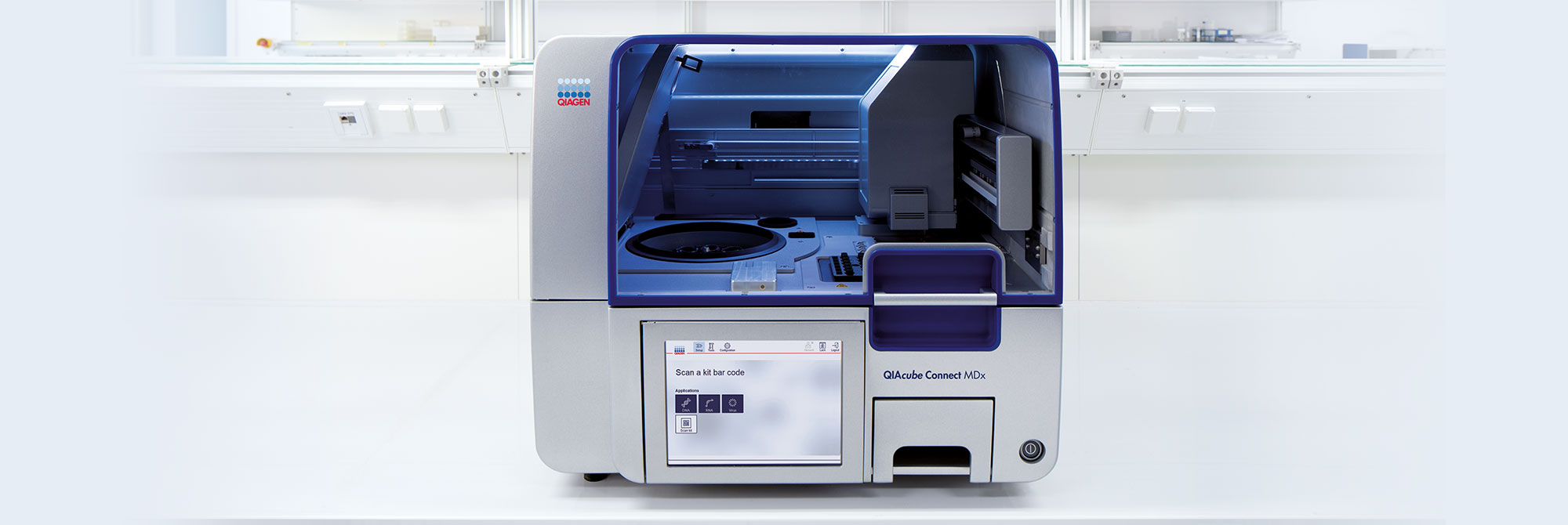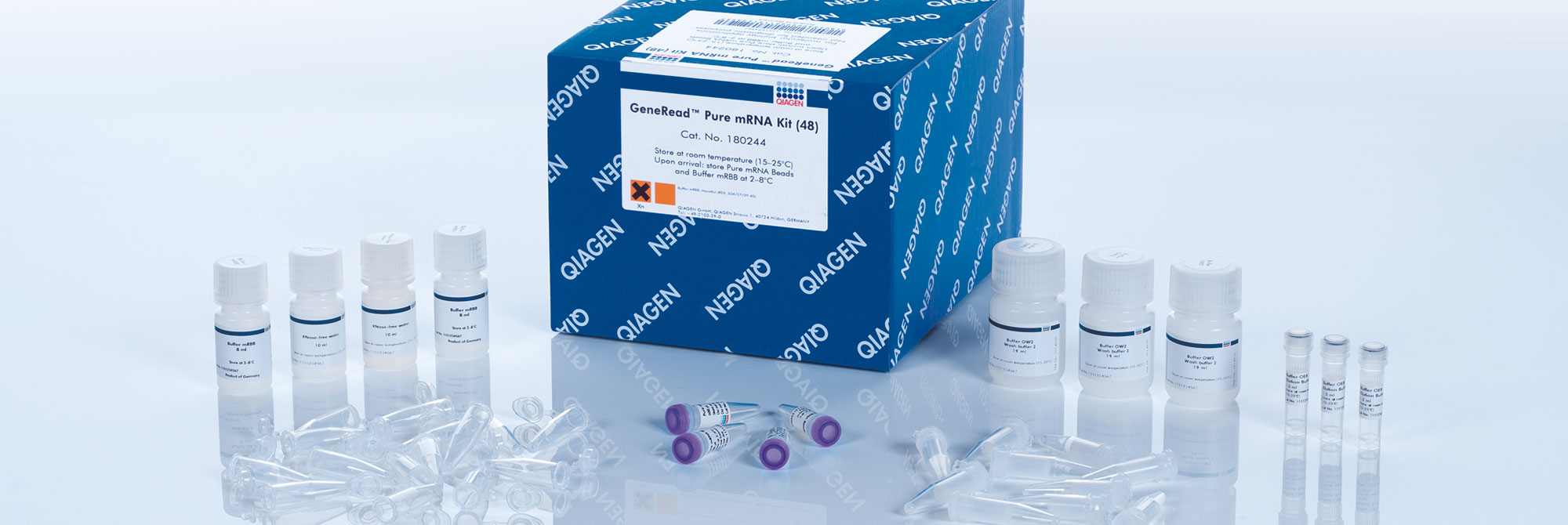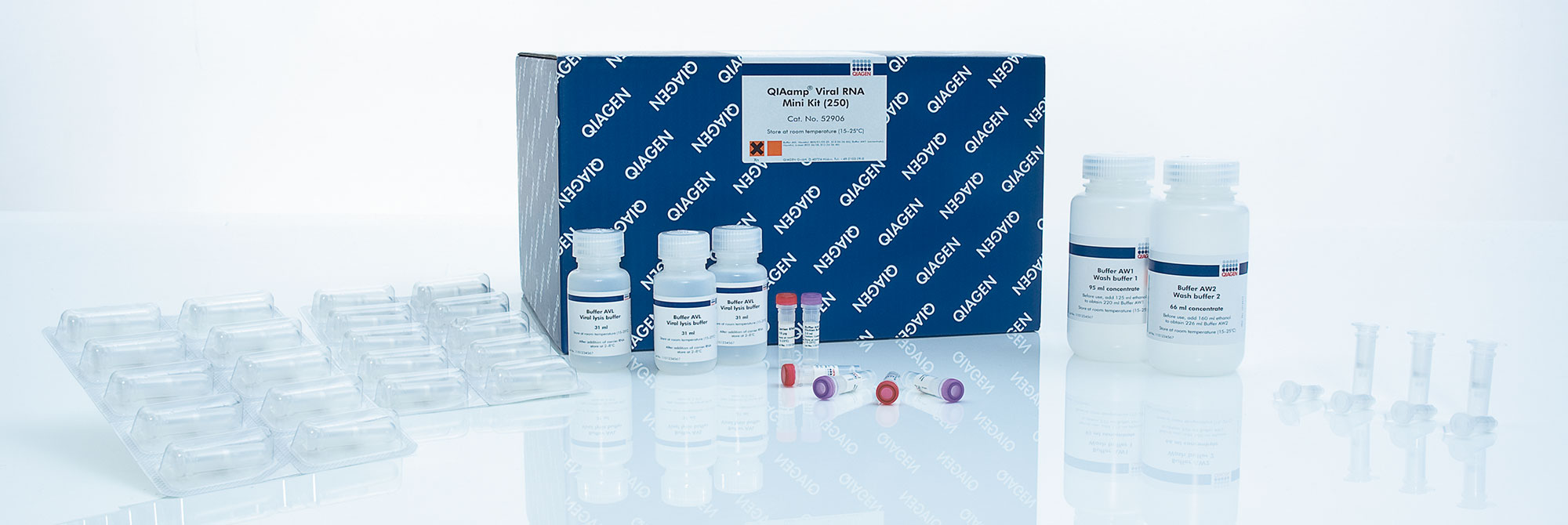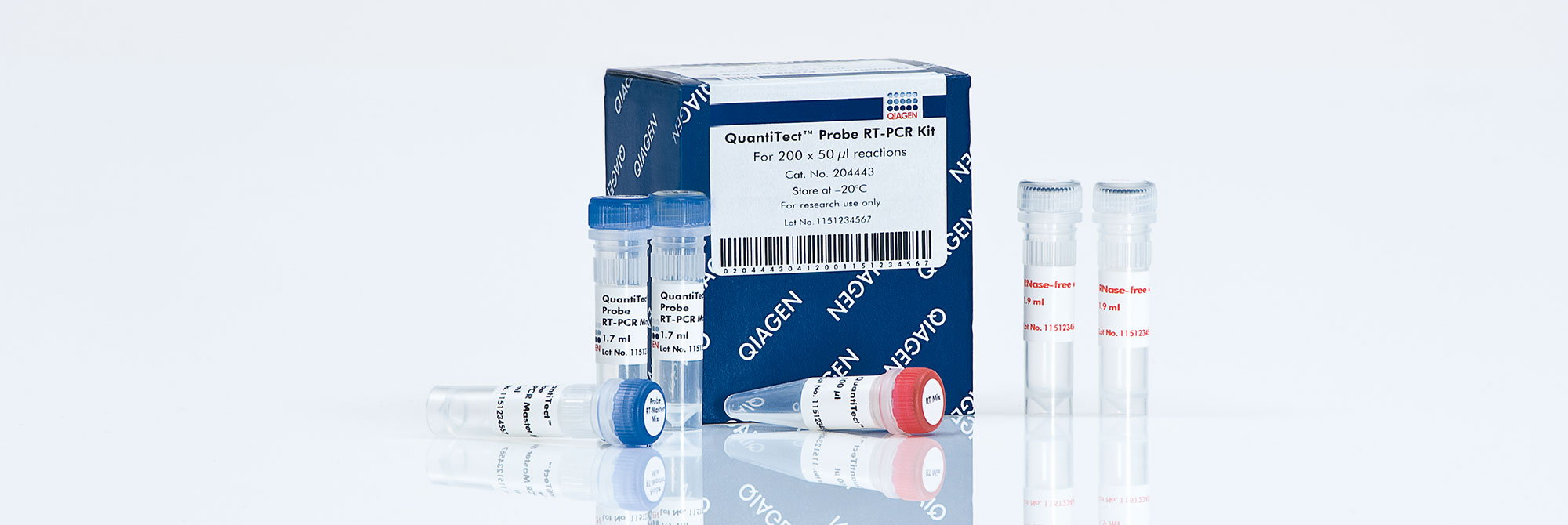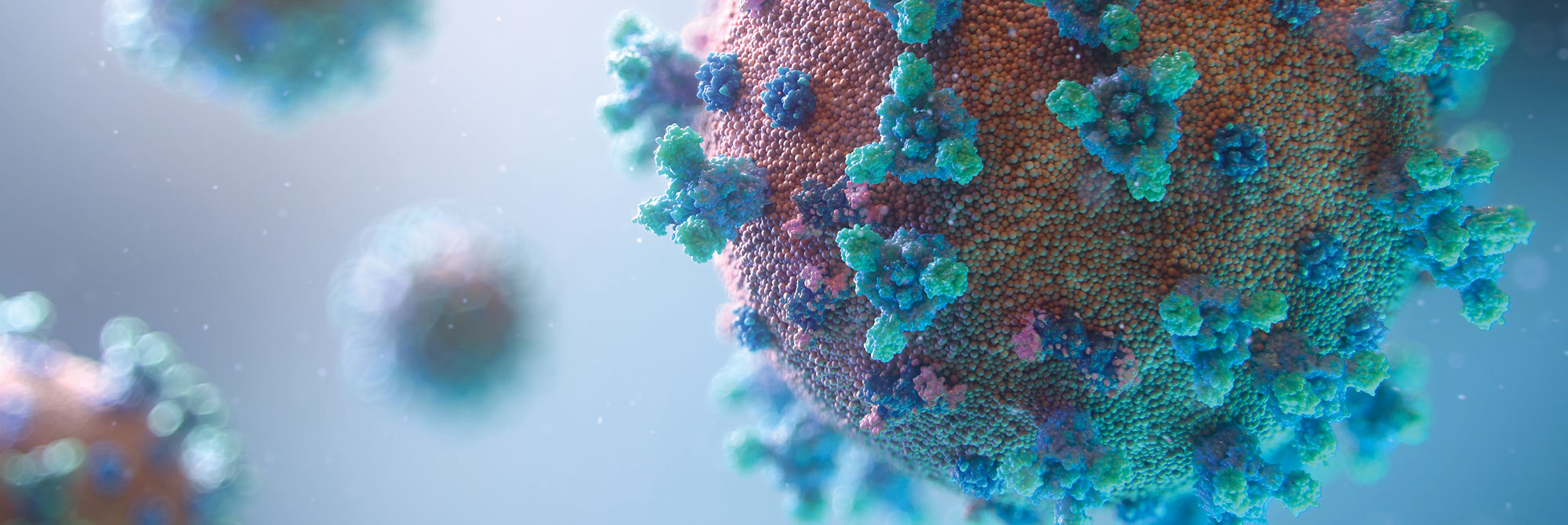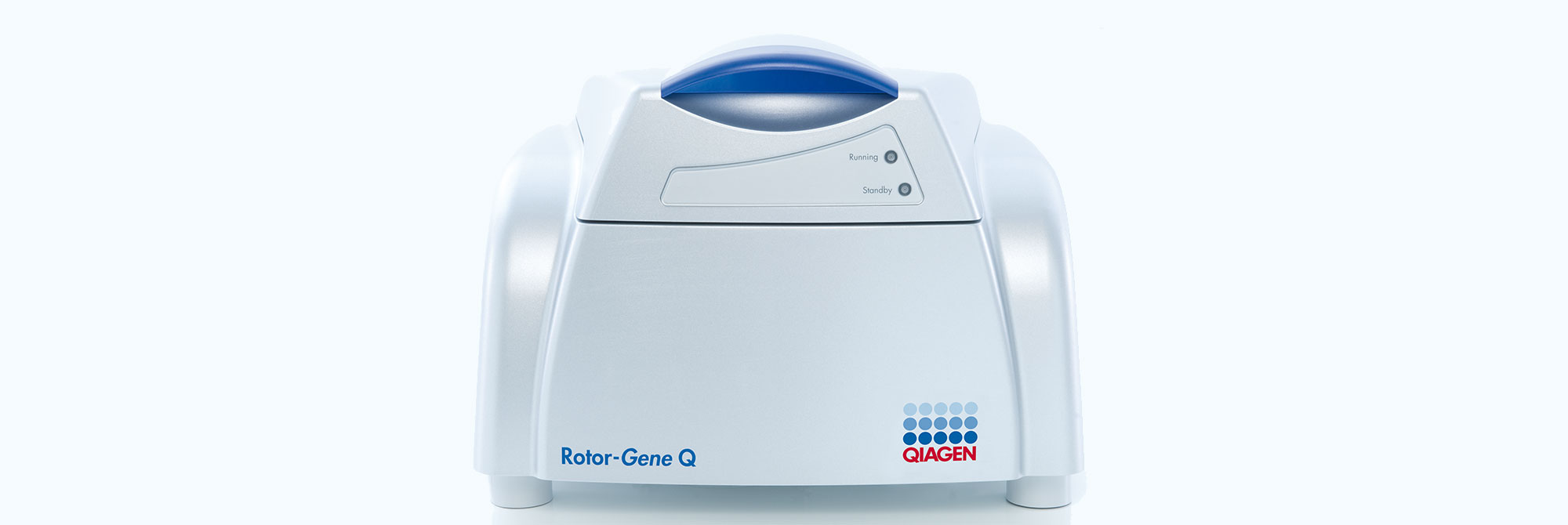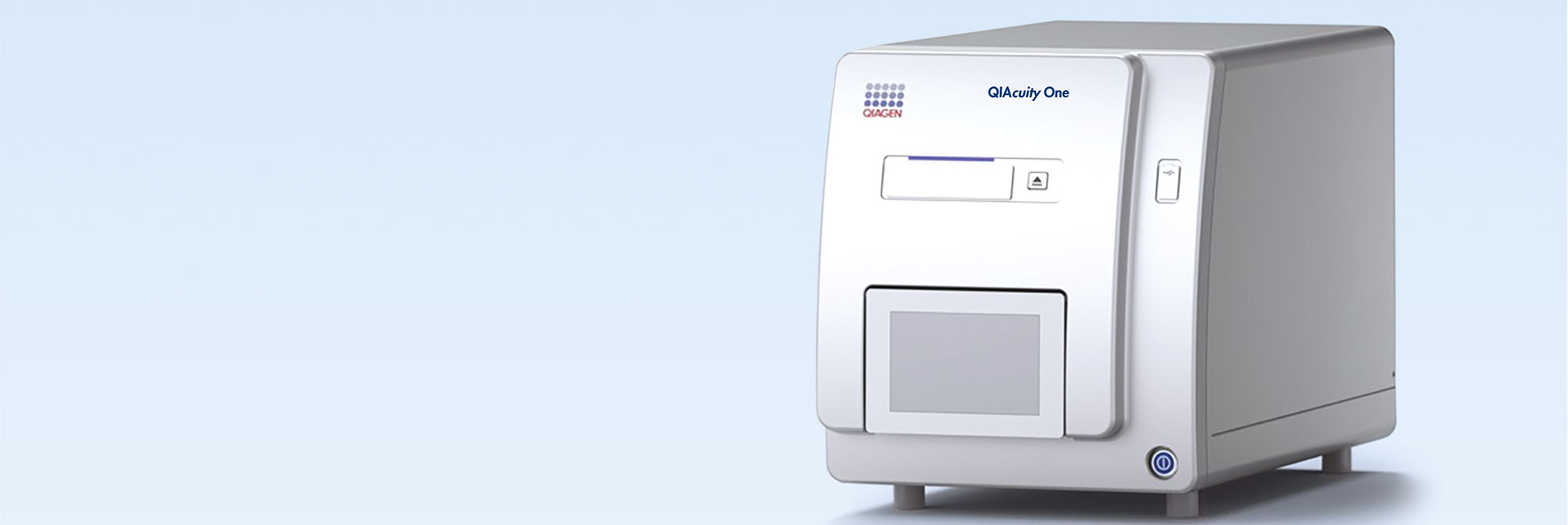Product Description
The PAXgene Saliva Collector is a non-invasive sample collection device for human saliva collection, stabilization, transport and storage. The device is designed to simplify at-home collection without the intervention of lab personnel. The collection device contains a stabilizing solution which maintains the DNA levels in human saliva samples by protecting DNA from degradation and inhibiting bacterial growth over storage time. SARS-CoV-2-derived RNA copy numbers are also stabilized, and the virus is prevented from infecting and replicating in a cell culture model.
The device is part of a comprehensive preanalytical workflow through nucleic acid extraction and analyses, contributing to reliability and reproducibility of your test results. The PAXgene Saliva Collector is compatible with existing QIAGEN automated and manual extraction kits. The isolated nucleic acids can be used for standard molecular test methods such as RT-qPCR, qPCR, dPCR and NGS.
The PAXgene Saliva Collector is intended for molecular biology applications. This product is not intended for the diagnosis, prevention, or treatment of a disease.
Performance
The PAXgene Saliva Collector is part of a comprehensive preanalytical workflow for human saliva collection, stabilization, transport and storage through nucleic acid extraction and analyses. The collection device contains a stabilizing solution which stabilizes the DNA levels in human saliva samples by protecting DNA from degradation and inhibiting bacterial growth over time. It is compatible with existing QIAGEN automated extraction kits, such as the QIAsymphony DNA Midi Kit on the QIAsymphony SP Instrument and the QIAamp DNA Mini Kit on the QIAcube (classic and Connect), as well as for manual extraction with the QIAamp DNA Mini and Puregene Cell Kits.
In addition to DNA stabilization, a research study shows that SARS-CoV-2 (severe acute respiratory syndrome coronavirus type 2)-derived RNA copy numbers could be preserved when saliva is collected in the PAXgene Saliva Collector. The viral RNA can be prepared with the QIAamp Viral RNA Mini Kit and quantified with QuantiTect Probe RT-PCR Kit on QIAGEN Rotor-Gene® Q instrument (Figure 1).
Samples collected with the PAXgene Saliva Collector have stable DNA levels for up to 24 months at temperatures up to 25°C. This longevity is possible as DNA is preserved from chemical and enzymatic degradation and bacterial growth is inhibited. After 24 months of storage, DNA still retains both high yield and quality if isolated with the QIAGEN DNA extraction kits and protocols specified (Figure 2). Long-term storage of stabilized saliva at -20 or -80°C is possible (storage study is ongoing).
Protocols and supplementary protocols (see resource section below) provide a broad range of existing, proven and flexible QIAGEN DNA extraction solutions for throughput and sample input volume. These protocols provide DNA that is high yield and purity, free of PCR inhibitors.
For manual extraction using silica membrane technology, supplementary protocols are available for the QIAamp DNA Mini Kit spin and vacuum protocols. This kit can also be used for automated DNA extraction on the QIAcube (classic) and QIAcube Connect (Figure 3). Standard protocols for the QIAcube Connect are available on QIAGEN.com. Protocols for the QIAcube (classic) can be found using the QIAcube Standard Protocols tool on QIAGEN.com. Optimized protocols for the QIAamp DNA Mini Kit provide high yields of pure DNA, and flexible elution volumes allow DNA concentration to be easily optimized for each downstream application.
The Puregene procedure uses a modified salting-out precipitation method for purification of DNA. The supplementary protocol “Purification of DNA from the PAXgene Saliva Collectors using the Puregene Cell Kit” for the Puregene Cell Kit offers a simple solution for manual DNA extraction from different sample input volumes, including the whole content of a PAXgene Saliva Collector (Figure 4).
Medium– to high–throughput automated purification of DNA from the PAXgene Saliva Collector is possible on the QIAsymphony SP Instrument using protocols for the QIAsymphony DNA Midi Kit* for sample volumes of 400 and 1000 µl. High reproducibility is through standardized magnetic bead processing technology (Figure 5).
When using either one of the aforementioned QIAGEN DNA extraction kits, the saliva gDNA is not only of high purity but also of high integrity (Figure 6A). The DNA profile is maintained during long-term storage of two years at room temperature (15–25°C) (Figure 6B).
Stabilization characteristics have been shown to be robust against elevated levels of endogenous and potentially interfering substances, under- or overfilling and inappropriate mixing (see technical note ´PAXgene Saliva Collector Robustness Study´). DNA isolated with the specified QIAGEN DNA extraction kits and protocols is free from PCR inhibition and is compatible with downstream analytical PCR assays, including digital PCR with the QIAGEN QIAcuity Digital PCR system (Figure 7), and next-generation sequencing (NGS) molecular test methods.
In addition to the genomic DNA, a research study demonstrated that the SARS-CoV-2 (severe acute respiratory syndrome coronavirus type 2) is stabilized in saliva collected with the PAXgene Saliva Collector for up to 4 days (96 hours) at 37°C. The genome of SARS-CoV-2 consists of RNA and can be isolated from the saliva with QIAamp Viral RNA Mini Kit for quantification with QuantiTect Probe RT-PCR and SARS-CoV-2 N1+N2 Assay Kits on QIAGEN Rotor-Gene Q instrument (Figure 8A).
While the PAXgene Saliva Collector stabilizes SARS-CoV-2 particles for detection and quantification it efficiently inactivates the virus, rendering it unable to infect and replicate in a cell culture model (Figure 8B, C, D).
Principle
The PAXgene Saliva workflow starts with the collection of human Saliva in PAXgene Saliva Collectors containing a stabilizing solution.
The PAXgene Saliva Collector is a plastic device with a funnel screwed to a collection tube which enables 2.0 mL human saliva collection. The funnel consists of an inner cavity containing 1.0 ml of the stabilizing solution. The inner cavity is secured to the inner collection tube which helps prevent spillage of the solution (Figure 9). The stabilizing reagent is released upon unscrewing of the funnel (Figure 10). The stabilizing reagent has bacteriostatic properties which inhibit bacterial growth over storage time. It is free of crosslinking or nucleic-acid modifying substances.
Procedure
In contrast to invasive specimen collection, saliva collection with the PAXgene Saliva Collector does not require trained professionals or dedicated facilities to collect a saliva sample. With clear instructions and verified collection device safety claims, saliva specimens can be easily self-collected with the PAXgene Saliva Collector from most people at home or outside of a doctor´s office.
Saliva is spit into the funnel until the liquid saliva (excluding bubbles) fills up outer part of the tube and reaches the fill line. This usually takes about 5–10 min. When the fill line is reached, the funnel is slowly unscrewed from the tube with the tube still held in upright position. This releases the stabilization solution from the inner part of the tube. After complete liquid transfer the funnel is discarded, the lid is removed from the bottom of the tube, placed over the opening and screwed tightly to close the tube. Finally, the tube is inverted 5 times to mix saliva and stabilizing solution (Figure 10).
For transportation of the stabilized saliva sample, the PAXgene Saliva Collector tube can be put back into the blister box without the funnel.
For more details, download the PAXgene Saliva Collectors (25) Handbook from the resources section below.
Applications
DNA purified from saliva collected in the PAXgene Saliva Collector using the QIAsymphony DNA Midi Kit, QIAamp DNA Mini Kit or Puregene Cell Kit can be used in a wide range of downstream applications, such as:
- PCR, including digital, multiplex and quantitative real-time PCR
- Pharmacogenomic studies
- SNP genotyping
- Next-generation sequencing
SARS-CoV-2-derived RNA purified from saliva collected in the PAXgene Saliva Collector using the QIAamp Viral RNA Mini Kit can be quantified with QuantiTect Probe RT-PCR Kit and SARS-CoV-2 N1+N2 Assay Kit on the Rotor-Gene Q instrument.
*QIAGEN QIAsymphony DNA Midi Kit is not available in all countries. For further details please contact QIAGEN Technical Service

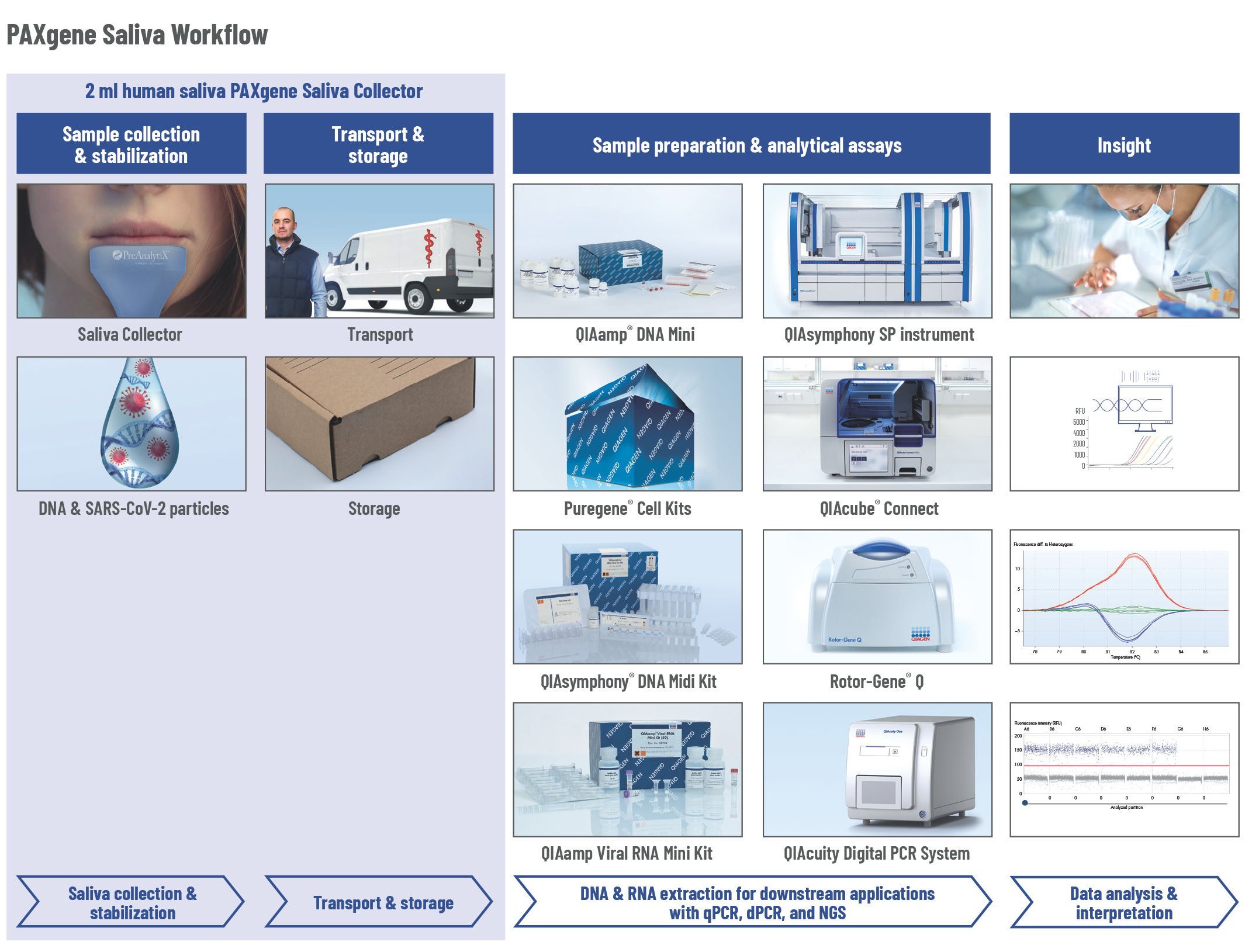
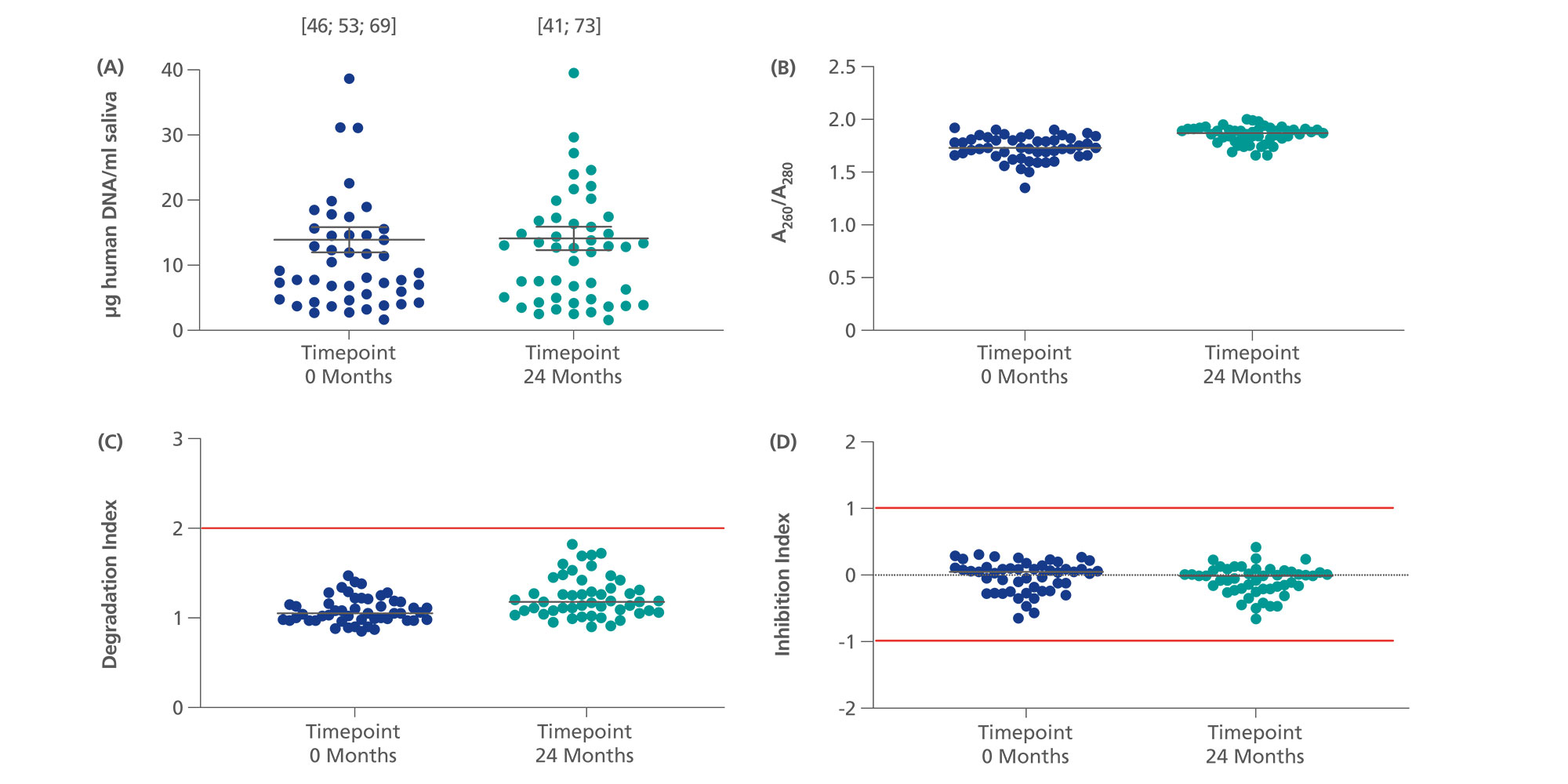
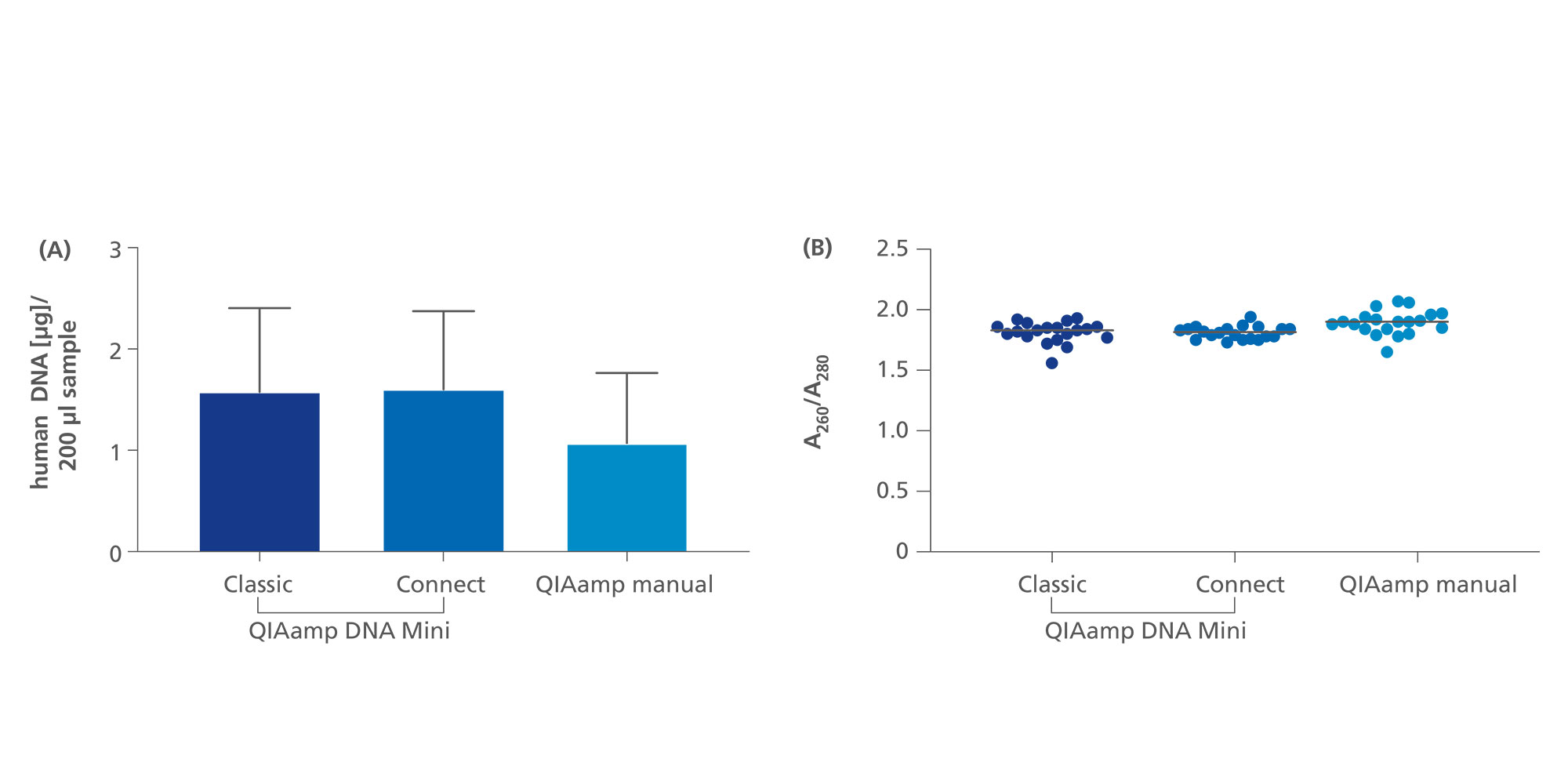
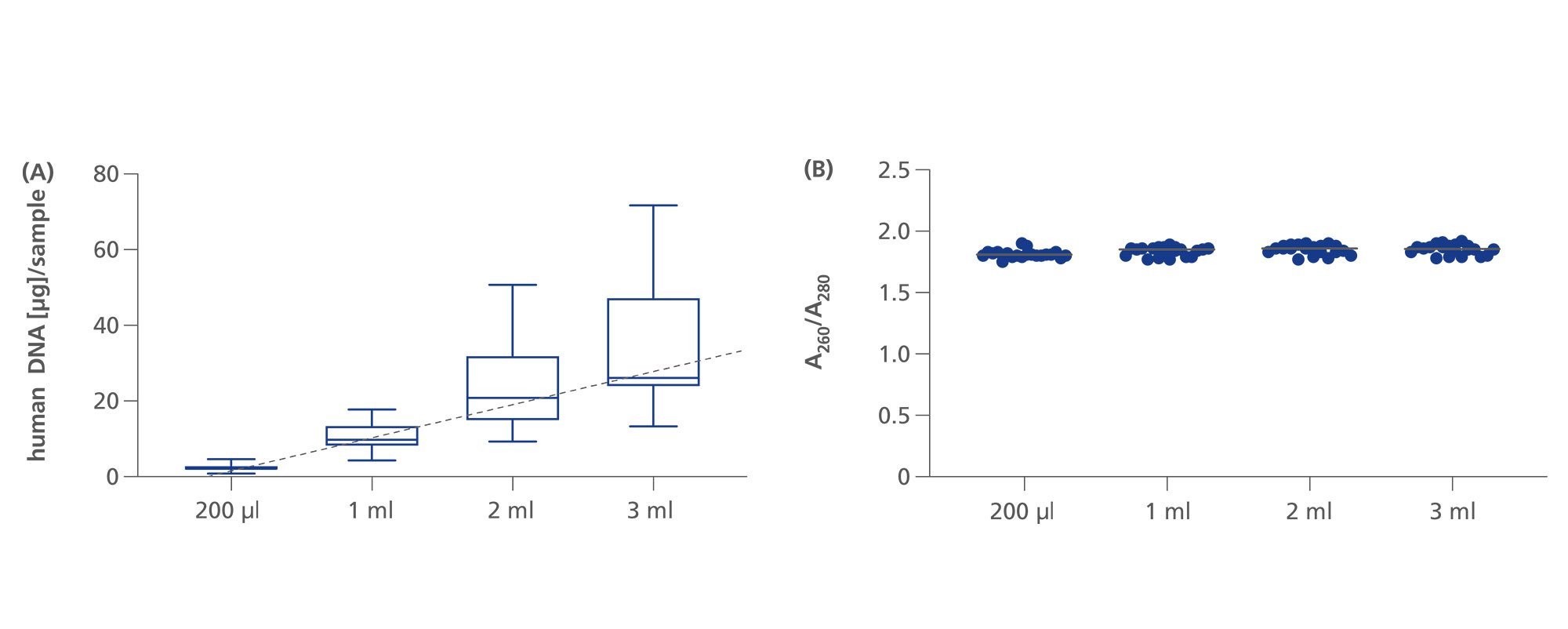
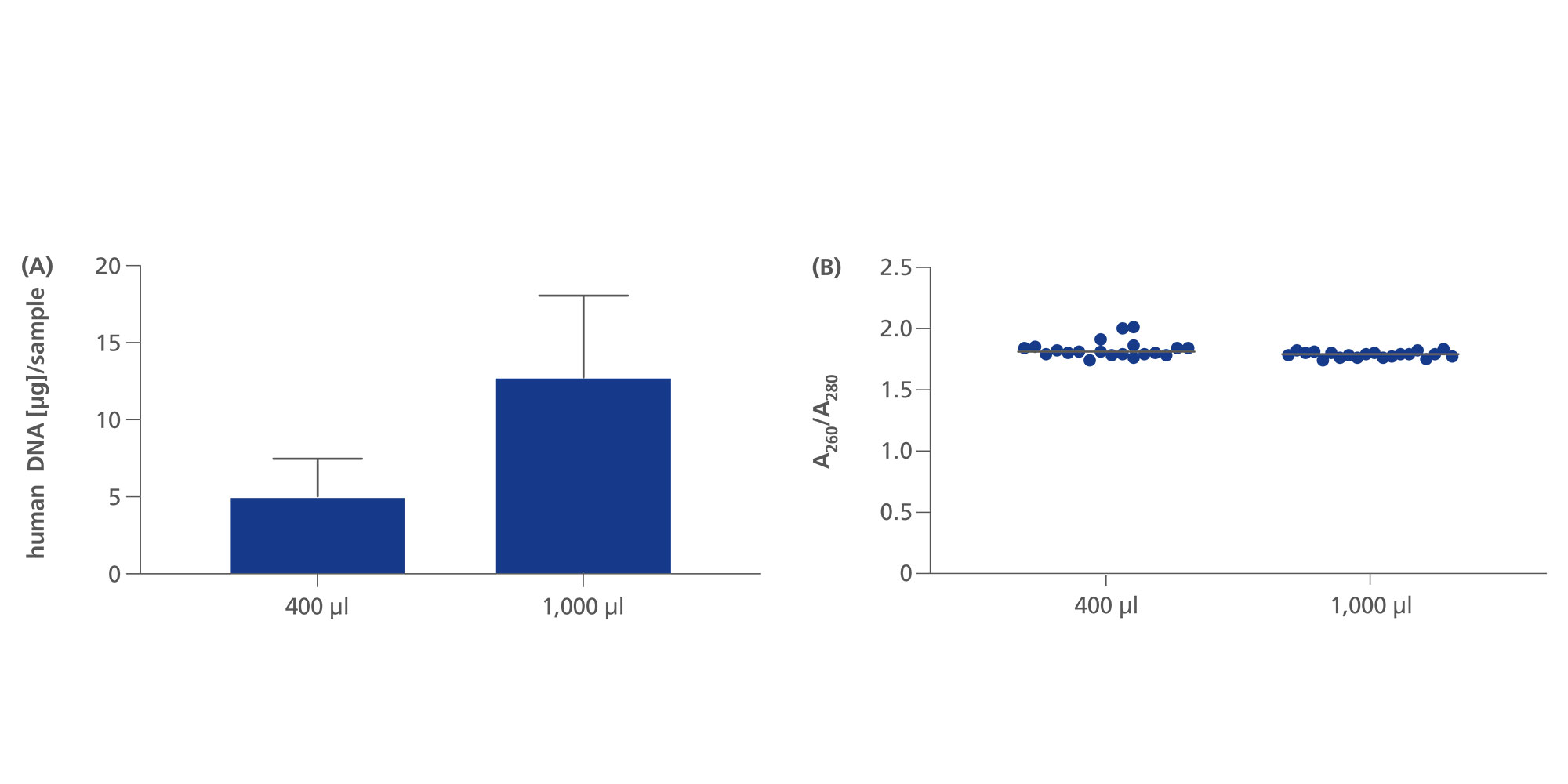
![Figure 6: Human genomic DNA obtained from PAXgene Saliva samples is of high molecular weight. Graphs depict a representative result from one donor each. A. Saliva was collected from healthy donors into PAXgene Saliva Collectors. gDNA was extracted from the stabilized saliva using QIAamp DNA Mini Kit (blue), QIAsymphony DNA Midi Kit* (green) and Puregene Cell Kit (red). 20 ng of each of the obtained gDNA samples were analyzed with the 4200 Agilent TapeStation System using Genomic DNA Screen Tapes.
B. Saliva was collected from healthy donors into PAXgene Saliva Collectors. gDNA was extracted from 200 µl stabilized saliva using Puregene Cell Kit directly after stabilization (Timepoint 0 months [blue]) and after 24 months storage at room temperature (15-25°C) (Timepoint 24 months [green]). 20 ng of the obtained gDNA samples were analyzed with the 4200 Agilent TapeStation System using Genomic DNA Screen Tapes.
* QIAGEN QIAsymphony DNA Midi Kit is not available in all countries. For further details please contact QIAGEN Technical Service](/storage/images/_processed_/b/4/csm_LG_0451_LS_QF_Pax_SalCol_DNA_fragmentlength_6a3c211ec7.jpeg)

